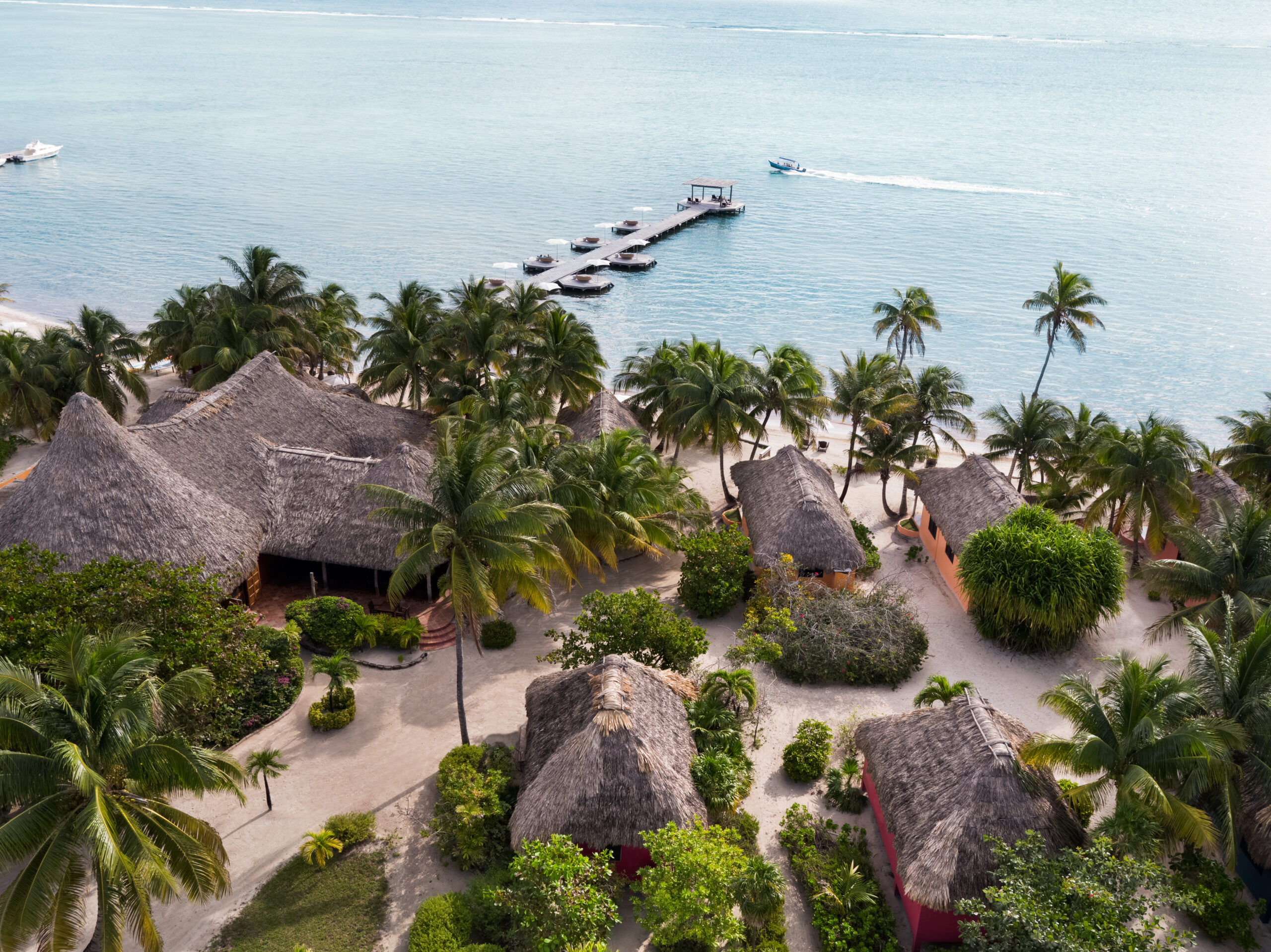Hidden Belize
Adventure abounds on the country’s less-travelled mainland.
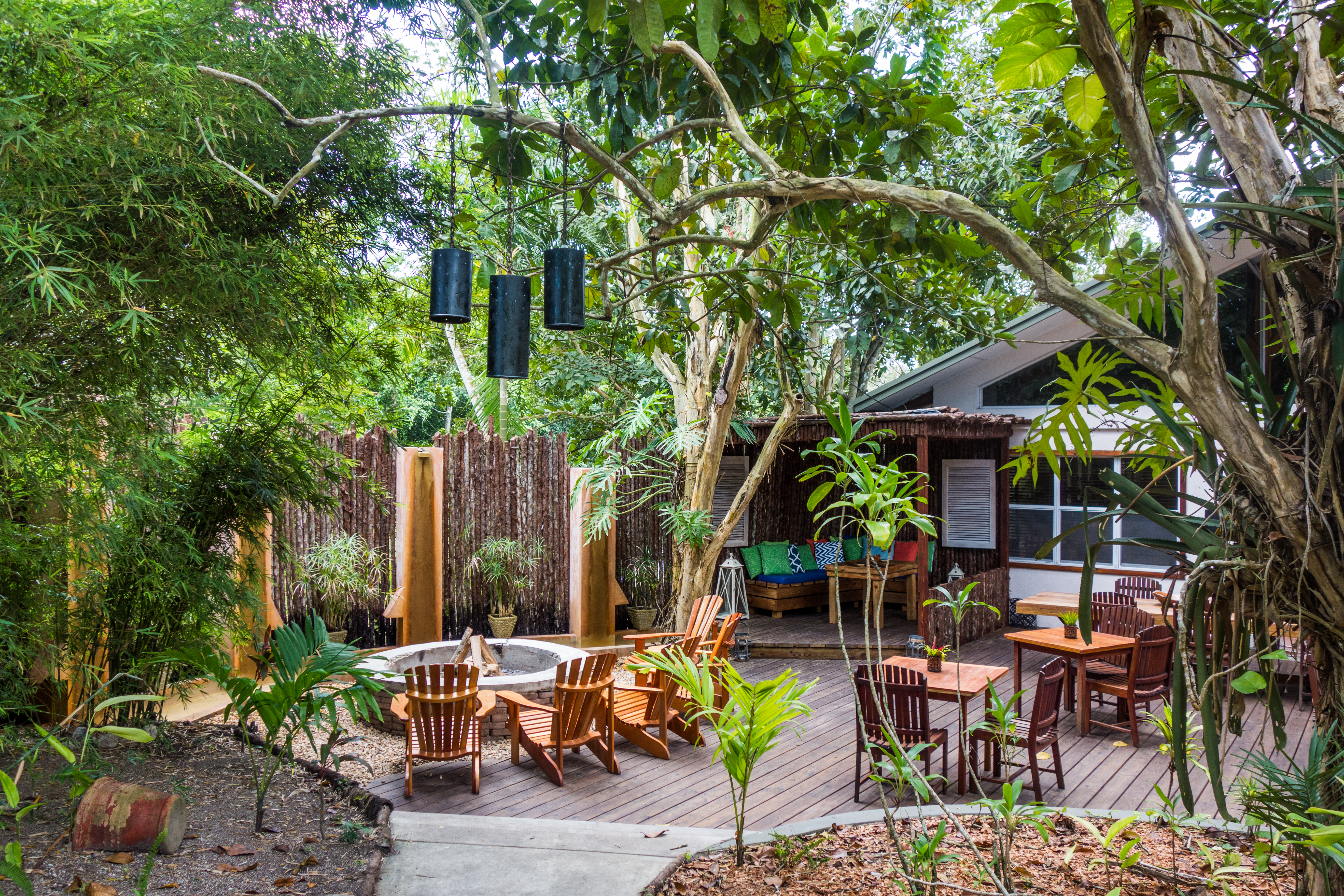
The Cessnas landing at San Ignacio airport chortle and spit as they touch down on what may be the world’s shortest runway. The terminal is a small wooden outpost that can be walked through in under five seconds, bordered by a dark jungle. Travellers seeking Belize without the crowds would be well advised to take the jolting flight into the Central American country’s Western Cayo District. As with many parts of the world, islands like Ambergris Caye and Caye Caulker suffer from overtourism, which has dulled much of their charm. The middle-of-nowhere solitude felt upon arrival in San Ignacio belies the presence of luxe jungle lodge Ka’ana, which emerges through towering fan palms at the end of a dirt road, a short drive from the airport. The retreat’s name means “heavenly place” in the Yucatec Maya language, and indeed, an Edenic garden dotted with spring’s coral hibiscus covers the grounds.

Luxe jungle lodge Ka’ana emerges through towering fan palms at the end of a dirt road.
In between meals of Mayan-inspired fare harvested from Ka’ana’s two-acre organic garden, the hotel offers day-trip adventures that unveil the mysteries of this remote jungle region. A hand-cranked ferry carries guests across the Mopan River to the Xunantunich ruins, the remnants of an ancient Mayan city dating to 700 CE. Meaning “stone woman”, Xunantunich’s imposing limestone pyramids were named after an apparition seen by a villager in the 19th century. The lack of tourists lends the place an eerie air, in which one half expects the spectre to make a second appearance among the crumbling walls.
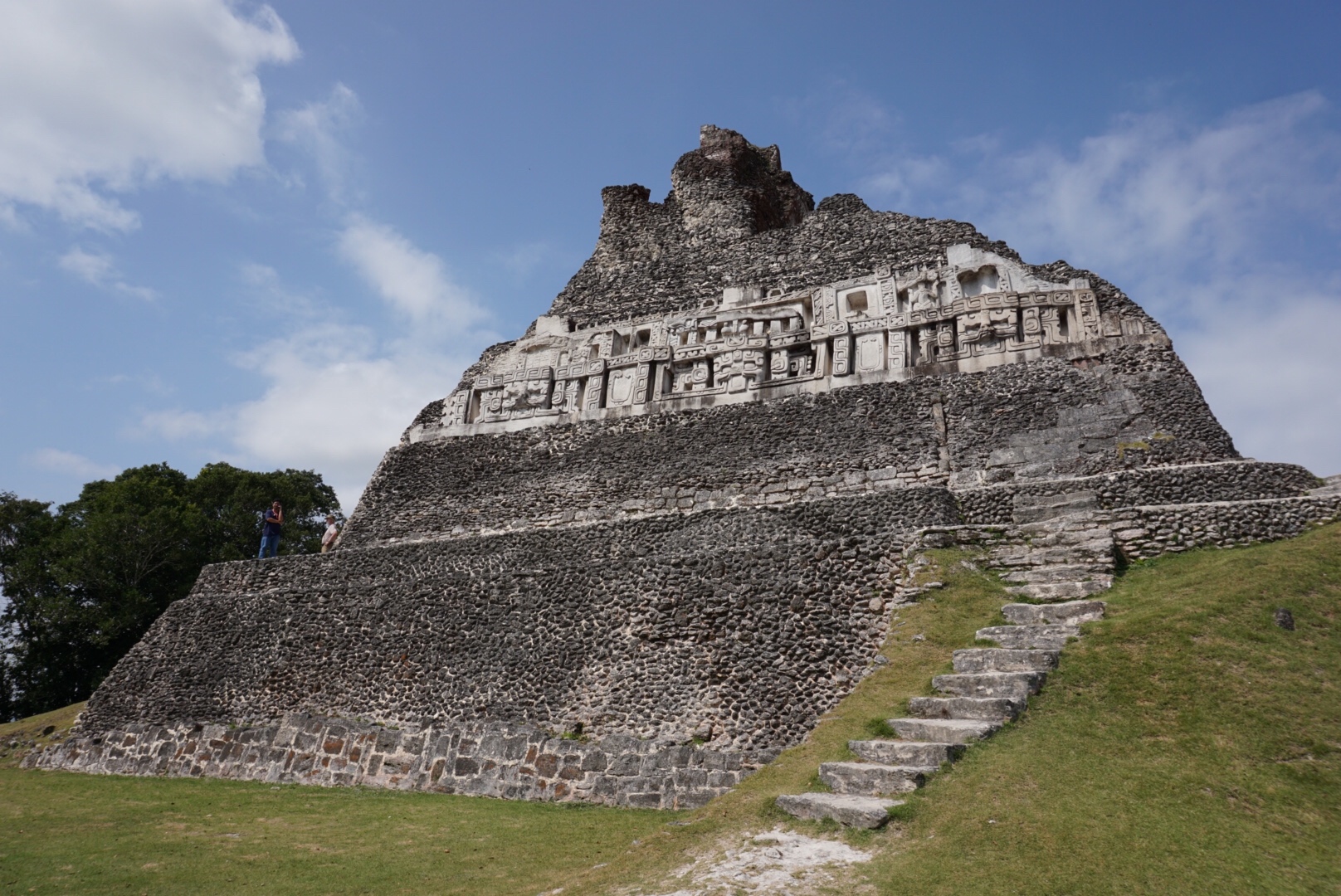
The Xunantunich ruins are the remnants of an ancient Mayan city dating to 700 CE.
Fall deeper under San Ignacio’s spell with a trek through verdant jungle toward Actun Tunichil Muknal, an ancient cave. Arriving at the cavern’s gaping mouth, visitors swim through the milky aquamarine water that pours from the entrance. “You’re entering the Mayan underworld now,” says Ka’ana guide Ben. The Mayans discovered the cave around 450 BCE and, believing it to be a portal to the underworld, used it for ceremonies and ritual sacrifices—evidence of which is peppered throughout the cave’s dry chambers, including pottery shards and human bones.
Dense jungle steeped in myth is only half of mainland Belize’s magic. A short Cessna flight away is the coastal town of Placencia, a sleepier, less commercial version of the country’s island hot spots. Electricity arrived in the 1990s and the main road was only paved in the last decade, but its reputation as a backpacker’s beach town is changing. The arrival of luxury resorts like Itz’ana—designed by architect Roberto de Oliveira Castro and interior designer Samuel Amoia (named Vogue’s “designer to watch” in 2015)—is drawing a more discerning traveller.
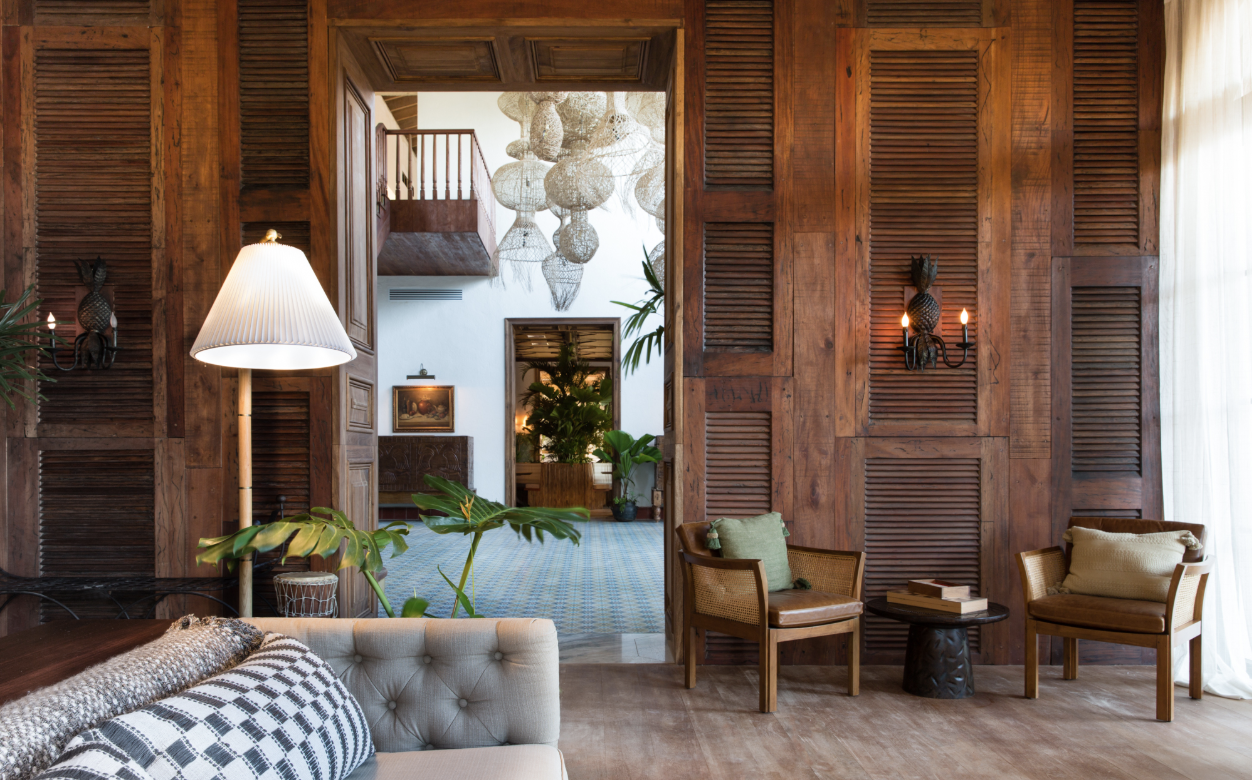
A cluster of pendant lamps made from jippi jappa palm hang from the vaulted ceiling at Itz’ana.
Opening in fall 2019, the 18-key resort strikes the difficult balance between luxurious and inviting. At the entrance to the great house, a black and white checkered floor is warmed by the burnished glow of mahogany and a lush palm mural blooms behind the front desk, a commissioned work by New York– and L.A.–based design studio Voutsa. Amoia scoured flea markets across Central America and the Caribbean to curate the decor and worked with local artisans to craft furniture. A central room with a soaring ceiling is punctuated by a cluster of pendant lamps made from jippi jappa palm, designed to resemble the traditional baskets woven by local Mayan women. Similar nods to Belize’s coastal culture and landscape are scattered throughout the property, from the rooms’ bamboo ceilings to the coral fossils imprinted on the poolside tile to the coconut tree wood used to craft the tables at Limilia restaurant.
Helmed by executive chef Dean Uren, the restaurant serves fresh reef-to-table cuisine that celebrates Placencia’s Garifuna and Mayan cultures. “What we’re doing here is rustic refined,” says Uren. “We’re taking the local food from down the street, refining it, and presenting it in a fashionable way.” A local San Marzano tomato soup is showered in cacao flakes, and an artful plate of seared tuna steak is served alongside salsa fresca and avocado salad. Just beyond the restaurant’s floor-to-ceiling windows, sand-strewn pathways lined with edible herbs lead down to the ocean. Upstairs from Limilia, guests can leaf through Hemingway tomes over a mojito in the Biblio Bar. A nudge of one of the bookcases gives way to a secret rum room where you can indulge in the country’s largest collection of rums surrounded by another George Venson mural–this one of a vibrant flock of flamingos.
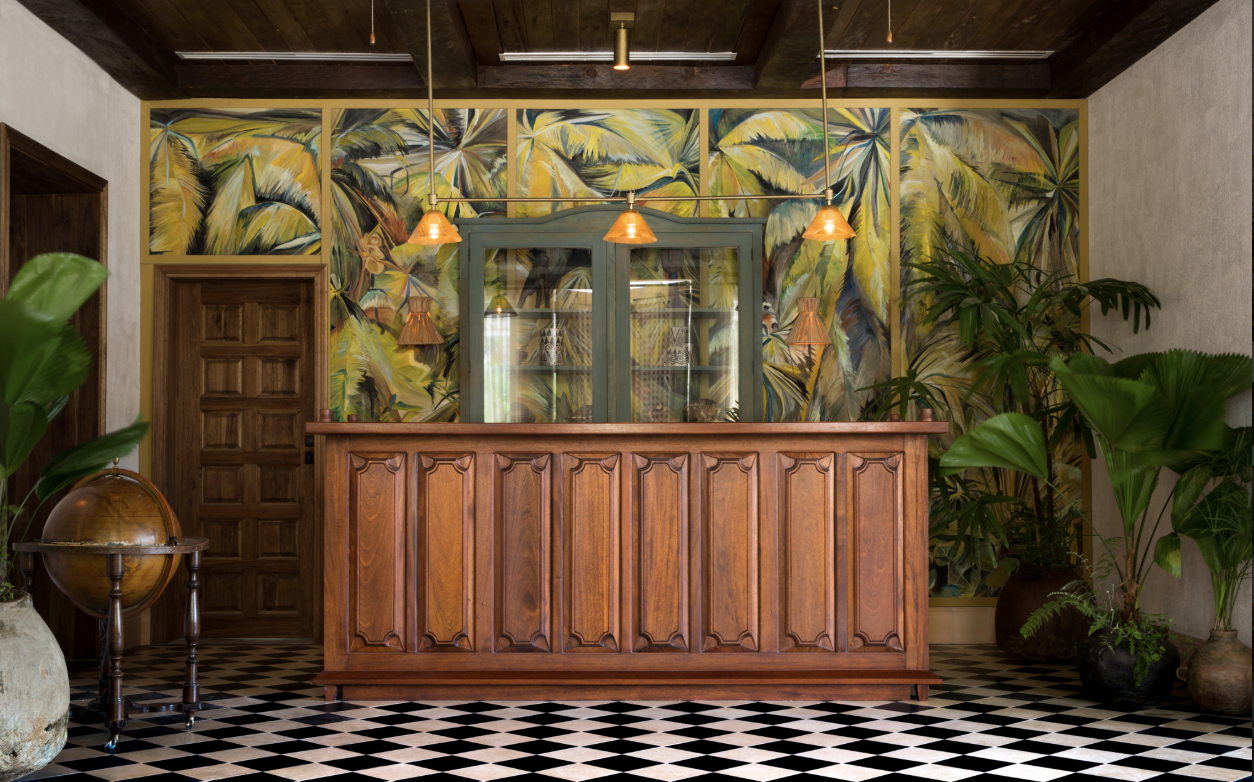
A lush palm mural by design studio Voutsa blooms behind the front desk at Itz’ana.
Travel by bike to Placencia Village and take in the town’s faded charm over coconut ice cream from Tutti Frutti. Just down from the main drag, a meandering side street is dotted with the workshops of local woodworkers and jewellery makers, and after the tangerine sun goes down, blackened fish is served on the upstairs patio of Rumfish y vino, a local favourite. The heart-thumping, tribal rhythms of Garifuna drummers at Belize Ocean Club summon the stars as the last light fades. Farther afield in southern Belize, a jaguar reserve and hiking expeditions await, but Placencia’s slow, simmering beauty is worth savouring.
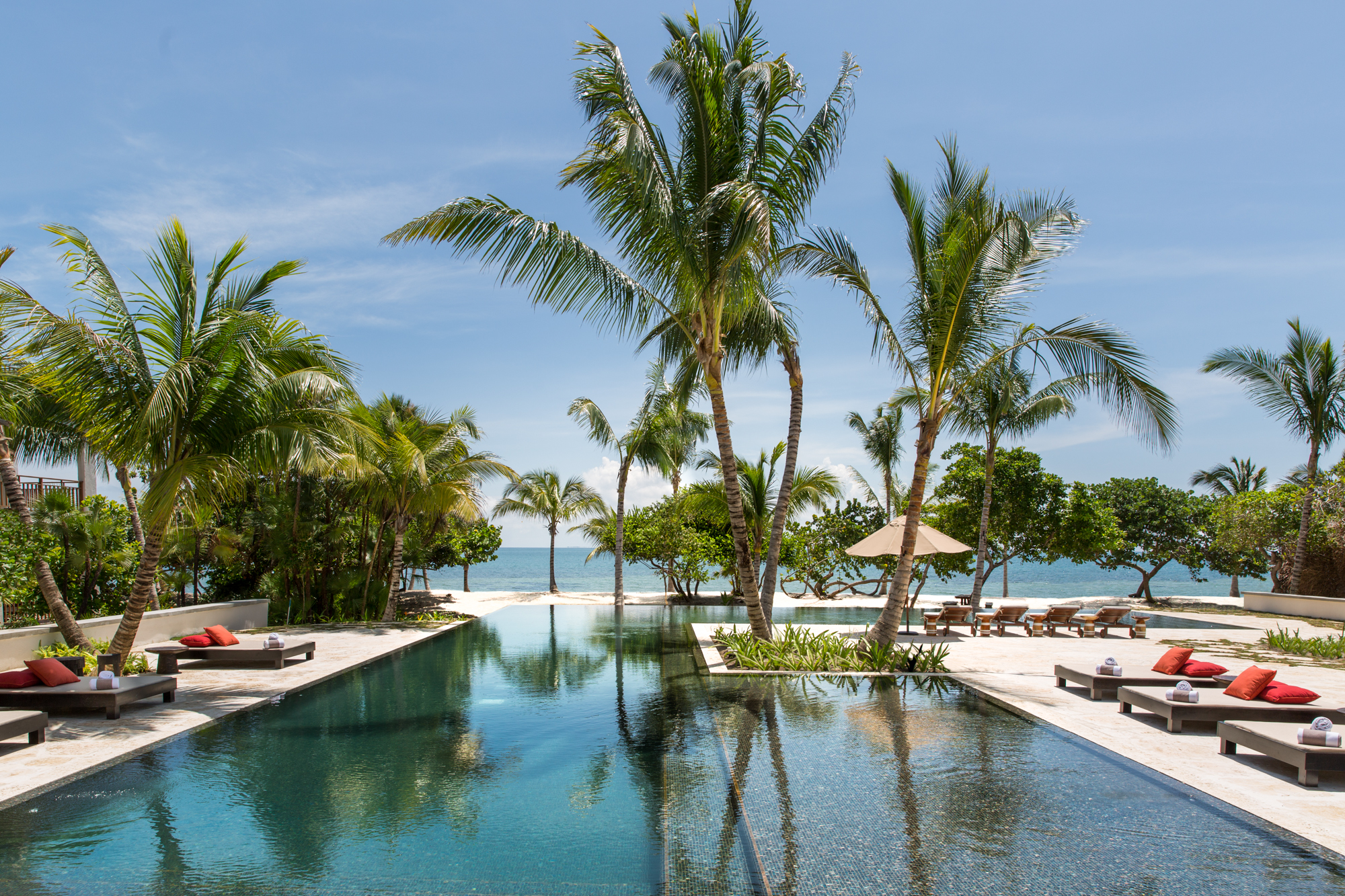
The Itz’ana Hotel located in the coastal town of Placencia, comes complete with its own beach.
_________
Never miss a story. Sign up for NUVO’s weekly newsletter, here.



